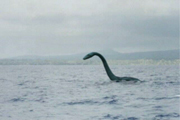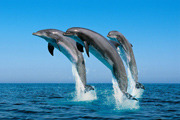Oceans cover more than 70% of the Earth's surface and contain about 97% of the planet's water supply. It's home to underwater creatures, from the smallest plankton to the largest creature on Earth, the blue whale. Find out more about the fascinating world of the ocean!
Oceans - The Big Five
There is actually only one big ocean in the world, as every ocean and sea are connected. Until the year 2000, there were only four recognized oceans, but in the spring of 2000, the International Hydrographic Organization marked out a new ocean called the Southern Ocean. Now, there are five main areas in this one big ocean.
- The Pacific Ocean is the largest of the five main oceans. It's 15 times the size of the US, covers about 28% of the global surface and is larger than the total land area of the world. With an area of 60.1 m2, it includes the Bering Sea, Gulf of Alaska, Philippine Sea and Sea of Japan.
- The Atlantic Ocean is the second largest ocean. It's 29.6 m2 and includes the Baltic Sea, Caribbean Sea, Gulf of Mexico and Mediterranean Sea.
- The Indian Ocean is 26.5 m2 and includes the Arabian Sea, Bay of Bengal, Persian Gulf and Red Sea.
- The Southern Ocean is 7.8 m2. It surrounds Antarctica and includes the Amundsen Sea, Bellingshausen Sea and Ross Sea.
- The Artic Ocean covers the North Pole. It's frozen all the time, except at its edges. It's the smallest ocean with an area of 5.4 m2, and includes Baffin Bay, Hudson Bay and Greenland Sea.
Oceans - The Blue Factor
When sunlight hits water, part of the light gets absorbed and part of it gets reflected. Sunlight appears to be colorless, which we call white light, but it's actually made up of all the colors of the rainbow. Blue light is absorbed by water at a slower rate than other colors of light. Pure water is also said to naturally be a faint turquoise color, but it is only visible when there is a lot of water in one spot - like an ocean. These two factors combined make for the spectacularly blue water you see at beaches around the world. If there are foreign particles, like sand, dirt or algae in the water, the color of the water can change because the light is now reflecting off something other than just water.
Oceans - Light Zones
The ocean is divided into three zones based on the amount of light it receives.
- The Sunlit Zone is the top layer closest to the surface. More than 90% of all marine life live in this zone because there is enough light entering the water for photosynthesis to occur. The Sunlit Zone, which is about 600 feet deep, is where most fish and sea animals live.
- The Twilight Zone begins at about 600 feet under the water to about 3000 feet down. Only a small amount of light can penetrate the water at this depth. As the water gets deeper, the pressure increases, so few animals and plants live in this zone.
- Ninety percent of the ocean is in the Midnight Zone. It's completely dark and the temperature is near freezing. Living things in this zone include the sea cucumber, vampire squid and snipe eel.
Oceans - The Salt Factor
Ever wonder why the ocean is salty? As water flows in rivers, it picks up small amounts of mineral salts from the rocks and soil of river beds. This slightly salty water then flows into the seas and oceans. Ocean water evaporates through the process of the water cycle, but the salt doesn't evaporate and remains dissolved in the ocean. As time passes, the remaining water gets saltier and saltier.
Related Stories:

































